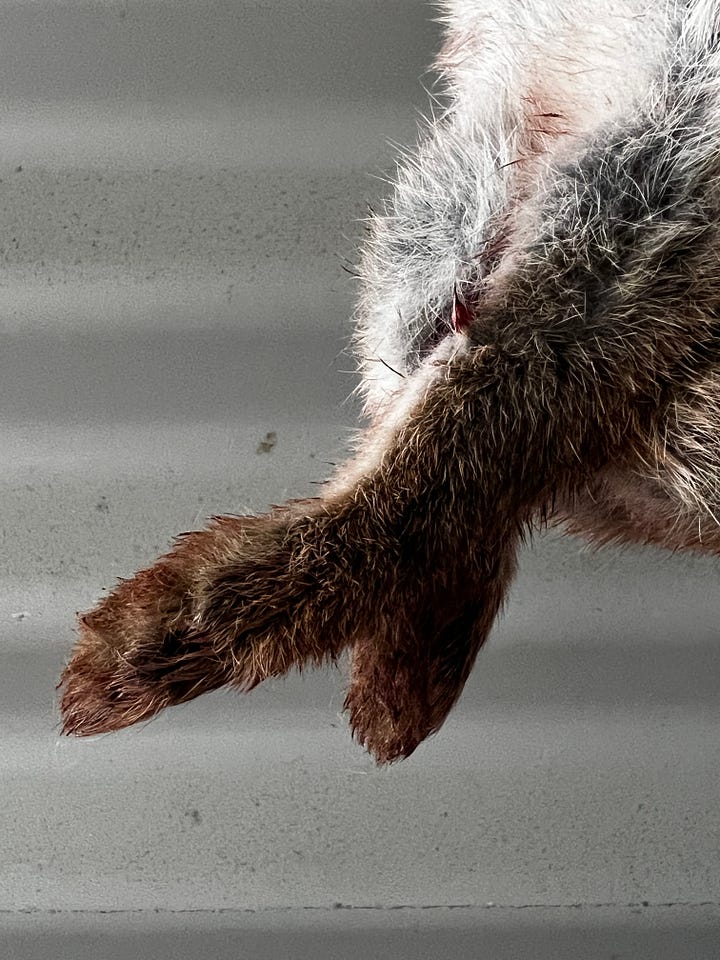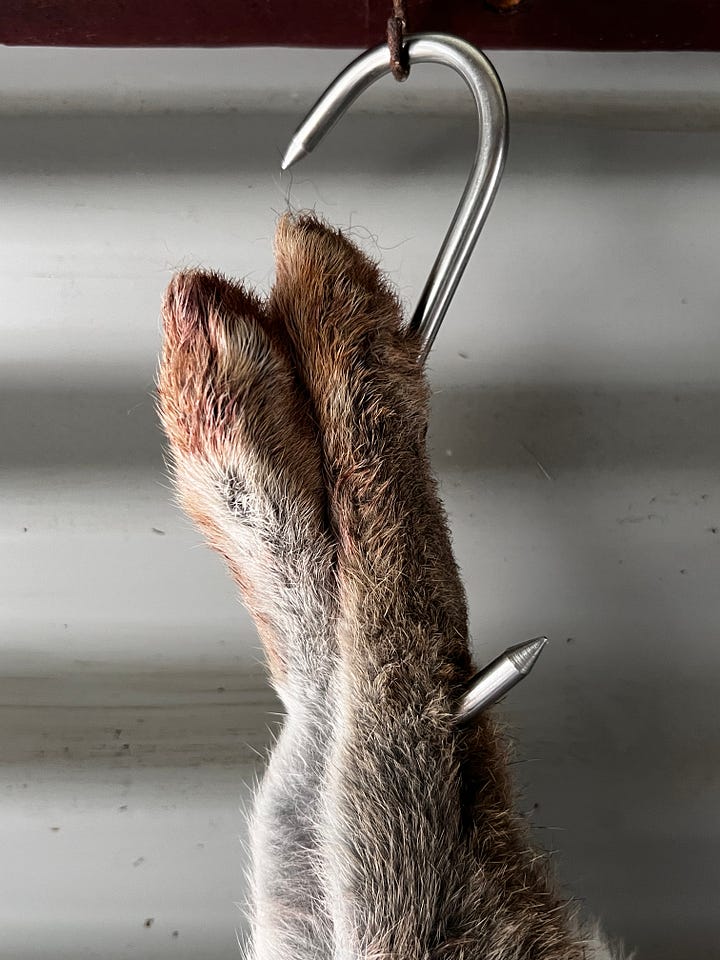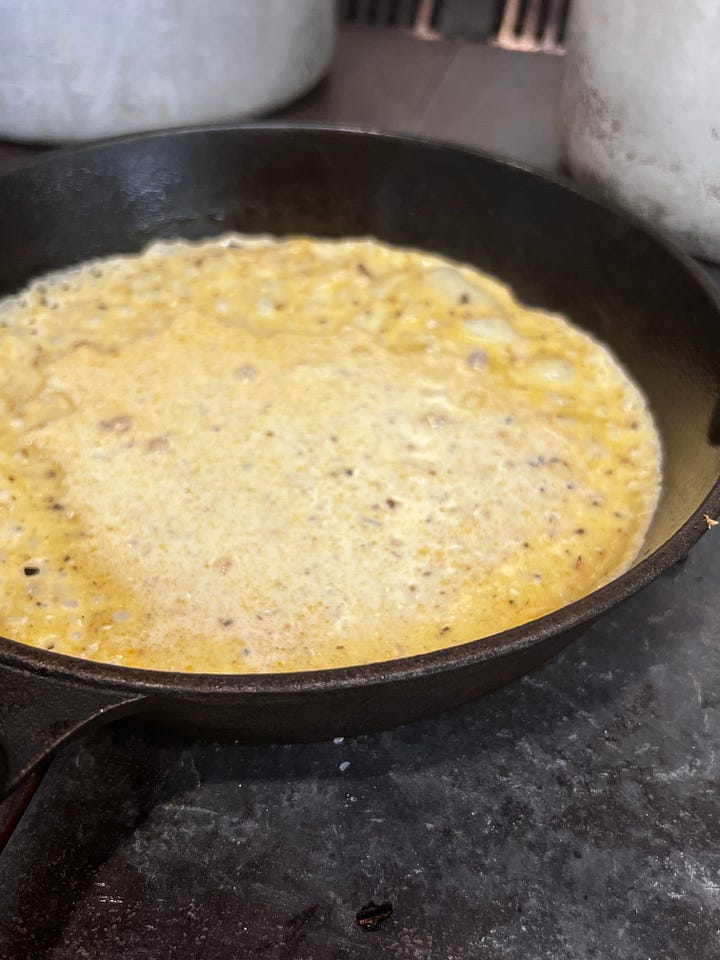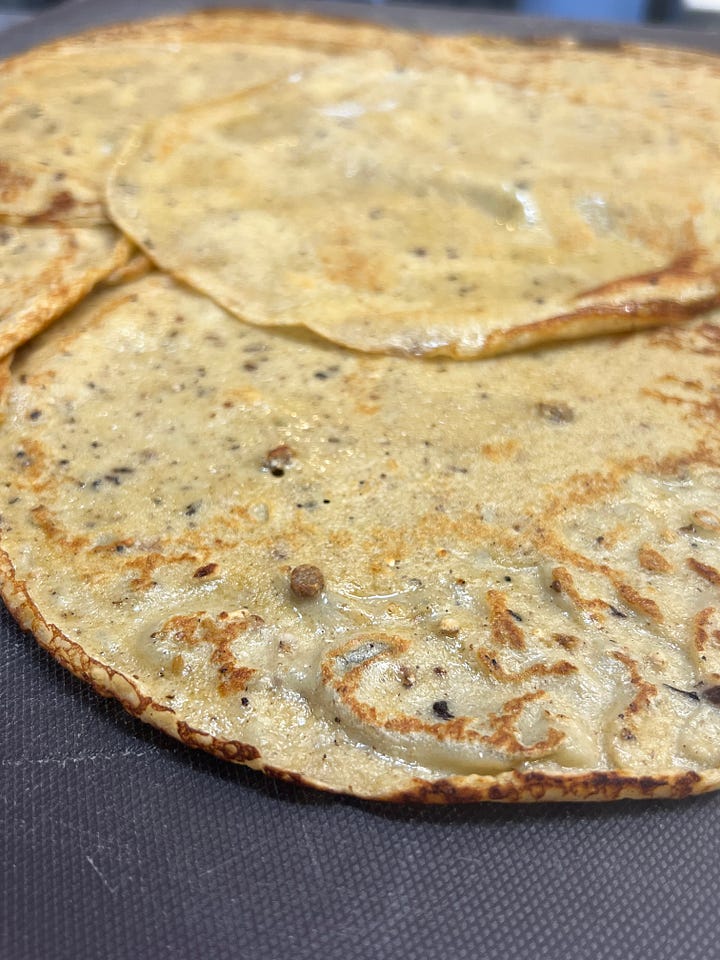Rabbit & Dandelion Wellington
#EatNZKaitaki chef/forager Adam Harrison sees huge value in these pests as a food source. He shares tips about how to butcher a rabbit, plus a recipe that utilises the loins, inner fillets & kidneys.
Rabbits were introduced into the southland region of New Zealand by the 1840s. They were brought over by British whalers as a food source and something familiar to remind them of home. Even with the best intentions, the introduction of the rabbit was a disaster for New Zealand, and it only took 30 years from them to reach plague proportions. An ecological disaster ensued with the rabbits overgrazing on native tussocks and grasses leaving the worst affected areas with very little vegetation cover that led to soil erosion. An effect that still hasn’t recovered in some areas.
The worst was still to come though, the growing rabbit population has been felt the hardest by the agriculture sector. The rabbit grazed on the same pastures the sheep did and many farmers had to reduce their flock size. As an effort to control the number their natural predators were introduced, Weasels, Stoats, and Ferrets to the devastating effect on the native bird population.


After many failed population attempts farmers turned to spreading disease such as Myxomatosis in the 1950’s and Haemorragic disease or simply K5 for short, illegally introduced in 1997 and MPI legally in 2018 expected to eradicate more than 40% or as high as 80% of the wild rabbit population.
As of today $25 million a year is being spent on direct pest control for rabbits.
But is there a better way? Could we see value in rabbits as a food source? I wanted to share my recipe with you all, a symbiotic relationship between two introduced species that have spread all around the world with humans.
HOW TO BUTCHER A RABBIT
I start at the back of the rabbit; the legs give you the most meat on the animal.
Grab the leg and placing your thumb above the hip joint on the spine pull up to pop the leg bone out the socket. Hold your knife and starting at the top of the leg follow it down the spine with your knife cutting down through the dislodged joint.
The next step is to work on the front shoulders. Run your knife along the scapula and towards the sternum to separate shoulder from the body. These are great to slow cook, the meat falls off the bone and can be used for fricassee and terrines.
Remove the belly (thin meat from the ribs to the hip) from each side of the rabbit. These make the most amazing bacon when cured.
The most tender cut of the rabbit is the loin. Remove the loin from the saddle by running a knife down the side of the spine on each side and then teasing open the cut. Use the tip of the knife to roll each long thin fillet of meat off the bone.
On the inside of the rabbit contains more good bits including the inner loin, the kidneys, liver, and heart, which can all be easily removed with the tip of the knife.
RECIPE
Rabbit wellington, dandelion root crepes, wilted dandelion, FDK, Mirabelle Ketchup
This rabbit wellington recipe utilises the loins, inner fillets, and kidneys, here’s a list of other ingredients you will need:
2 sheets Puff Pastry
1 Egg
50g Dandelion Leaves
Dandelion Crepes
60g flour
1 tbsp Ground Dandelion root
1 Egg
175g Milk
25ml Water
25g Brown Butter
2g Salt
Whisk all ingredients to a batter, rest at room temperature for a minimum of 1 hour.
Heat a 10-inch non-stick frying pan on medium-low heat.
Once pan is hot, lightly oil the pan. Then ladle some batter into the centre of the pan then rotate the pan to spread the batter out to cover the entire bottom of the pan.
Let cook until the edges start to become golden and pull away from the pan then turn the heat to low and let cook until the bottom is all light golden.
Turn the heat off and flip the crepe over for 1 minute before removing from the pan. Repeat this process for the remaining batter.


Rabbit Brine
1L Water
140g Salt
70ml Red wine vinegar
40g Sugar
10 Garlic, cloves
20g Black peppercorns
5 Bay Leaf
4g Fresh rosemary
Place all the ingredients together and bring to the boil, cool before submerging the loins for 30 minutes.
When submerged in a brine, the meat not only absorbs some of the extra water but also retains it whilst cooking, resulting in a juicier texture and well-seasoned meat.
On a lightly floured surface, roll the pastry to a rectangle a little longer than the loins and long enough to wrap around them. Trim the edges to neaten, then lightly brush the pastry with egg yolk.
Bring a pot of salted water to the boil. Blanch the dandelion leaves and wilt them for 30 seconds before refreshing in cold water. Squeeze dry.
Place one of the dandelion crepes on the bench and place the loins on top overlapping the tail ends. Cover the loins with the wilted dandelion leaves and before wrapping in the crepe.
Lay in the middle of the pastry. Fold the shorter edges over the rabbit, then roll the whole thing around the loins to encase.
Heat the oven to 200°. Place the wellington on a lightly oiled baking tray. Brush the Wellington with egg yolk, then use the back of a knife to score a neat criss-cross or checkerboard pattern all over it. Sprinkle with flaky sea salt. Roast for 10 mins, then reduce the oven to 180°and cook for a further 6 minutes.
Once the wellington is cooked, remove from the oven. Cut one ends off the Wellington and rest on an angle so any juices can run out and the pastry remains crispy.
FDK: Fried Devilled Kidney
20ml Brandy
15ml Apple cider vinegar
15ml Worcestershire sauce
15g Dijon mustard
1 Pinch of Cayenne Pepper
20g Red Currant Jelly
30g Panko Breadcrumb
Mix all the ingredients together and marinate the kidneys overnight.
Leaving the marinade on the kidneys, coat in the panko breadcrumbs and set aside.
While the wellington is resting, fry the kidneys in a deep fat fryer at 180° for 1 minute.
Mirabelle Ketchup
2kg Mirabelle Plums
500ml Liquorice root tea
450g Sugar
500ml Apple cider vinegar
1 Star Anise
1 Cinnamon Stick
2 Tsp Yellow Mustard Seeds
1 Tbsp Black peppercorns
1 Garlic bulb
1kg Onion
Wash the plums and place in a pot with the liquorice tea and simmer until the skins burst and the pulp soften. Strain the plums and push as much of the skin, plump and liquid through leaving that stones behind.
Dice the onion and sweat off in a large pot over a medium heat until soft and translucent. Puree that garlic add to the onion and cook for a further minute.
Add in the spice followed by the vinegar and sugar.
Once the pot has come up to the boil add the plum pulp into the mix. Over a medium heat gently cook for 1 – 2 hours frequently stirring until the mixture has reduced and thickened.
Remove from the heat and season with salt before cooling.
Enjoy.
Recipe and images by Chef and Forager Adam Harrison from My Patch of Dirt.







